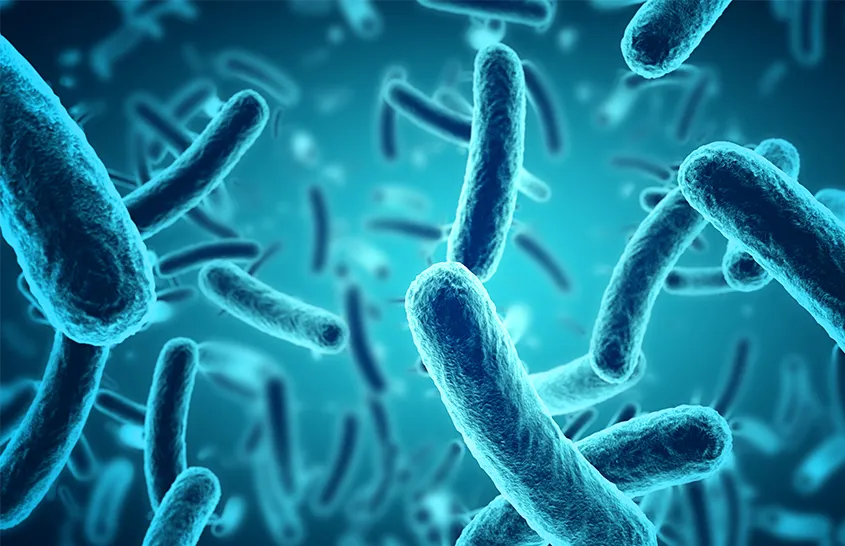Diarrhea, discomfort, and abdominal pain are typical symptoms of a gastrointestinal illness that we often assume will disappear on its own. However, these symptoms may actually be caused by bacteria in tap water. Coli bacteria are among the most common pathogens we initially ingest unnoticed in water. The symptoms mentioned above can persist, and an infection can pose a significant danger, particularly for babies, small children, and those with weakened immune systems. Experts recommend testing tap water for dangerous pathogens as soon as these symptoms occur. This will prevent incorrect or inappropriate treatment of illnesses and complaints. You can quickly test your water for coli bacteria and other microbacterial contamination to determine whether it is contaminated with dangerous pathogens.
Coli bacteria found in tap water are harmful intestinal bacteria
Bacteria are an essential part of our body, and some play a vital role. The gut houses many bacteria, with over 10,000 species in the digestive tract alone. The beneficial bacteria in the gut are responsible for critical functions such as producing vitamins and breaking down food. However, harmful bacteria like coliform bacteria can disrupt this delicate balance. These bacteria can cause severe illnesses in humans, and one of the most well-known strains is the EHEC pathogen. These pathogens can enter our drinking water through contamination, often via animal manure. Once in the groundwater, they can enter well water and potentially infect drinking water.
Coliform bacteria can survive in water for up to two weeks, and their optimal temperature is around 37 degrees Celsius. During this time, they pose a significant danger to humans.
E. coli in drinking water can cause an infection that leads to symptoms.
Sometimes, people can have coli bacteria in their drinking water without experiencing any symptoms. However, the first signs of an infection may take ten to fourteen days, often including fever, diarrhoea, and vomiting.
A severe infection can present with bloody diarrhoea and abdominal pain, as well as the presence of blood in the urine, which is not uncommon. The severity of the symptoms can vary greatly depending on the strain of E. coli bacteria causing the infection.
What happens when coliform bacteria are in tap water?
Escherichia coli, commonly known as E. coli, is a bacteria found in drinking water. It can cause symptoms such as nausea, vomiting, and diarrhoea, and in severe cases, it can even be life-threatening. Suppose coli bacteria are detected in the tap water. In that case, it is treated with chemicals as soon as possible to ensure its safety.
For those who use self-sourced well water, it is recommended to have it tested regularly. This is particularly important if you source tap water from your own well. A water test can detect coliform bacteria and other pathogens that may be present in the water. For those with private wells, a particular well water test can detect any possible contamination and ensure the safety of your drinking water.
Doesn’t the water undergo a process of testing for bacteria and purification at the waterworks?
Drinking water undergoes meticulous checks by the waterworks before it is distributed to consumers. If any abnormalities are detected, the water is usually disinfected by adding chlorine. The water is only supplied once it meets the limit values of the Drinking Water Ordinance.
In addition to clear limits for heavy metals and microbial contamination, the Drinking Water Ordinance stipulates that 100 ml of water must not contain any coliform bacteria.
However, it is only guaranteed that these values are not exceeded up to the consumer’s respective house connection. Sources of danger within the household installation are the responsibility of the homeowner. This is where bacteria can contaminate the drinking water.
Experts, therefore, recommend having the water flowing out of the tap analysed directly, at the latest if there is reasonable suspicion, but ideally at regular intervals. This can be done through a bacterial water test.
To kill E. coli bacteria, boiling drinking water is recommended.
Boiling drinking water is an excellent way to kill bacteria and germs. Therefore, if there is acute coli bacteria in the drinking water, boiling it is recommended. However, it is essential to note that boiling water does not offer an absolute guarantee of safety.
Waterworks respond quickly and effectively to coli bacteria contamination by purifying the water with chlorine. Pregnant women, however, should avoid drinking such water, as chlorine in drinking water can have adverse effects on them. Generally, the waterworks eliminate coliform bacteria in drinking water after a few days.
Finding intestinal bacteria in drinking water is relatively rare, but not impossible.
Although coliform bacteria in drinking water are not as common as they used to be, it can still happen from time to time that our tap water gets contaminated by intestinal bacteria. While these bacteria may go unnoticed by some people, pregnant women or those with weakened immune systems must take extra caution as soon as reports of coliform bacteria in drinking water are made available.
Types of bacteria that can be present in tap water
It’s essential to be aware that coliform bacteria is not the only type of germ that can pose a risk. Legionella, in particular, can also be a concern. Infection with legionella can cause various flu-like symptoms and complaints. In more severe cases, it can lead to pneumonia, known as legionnaires’ disease, which can be life-threatening. If you suspect legionella might be present in the water, it can be detected using a legionella test.

